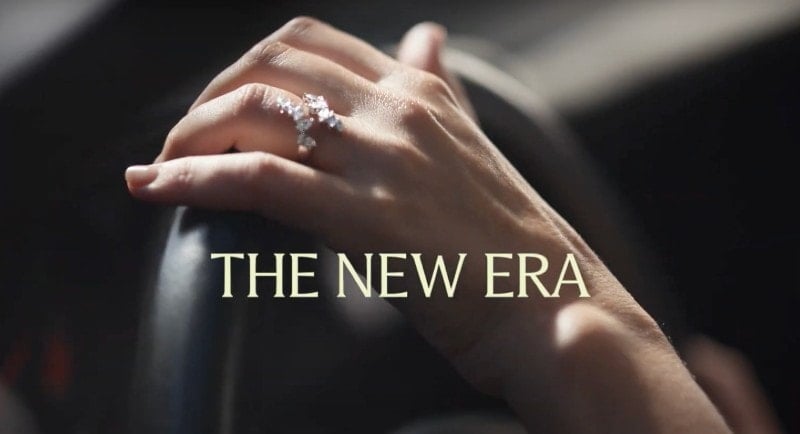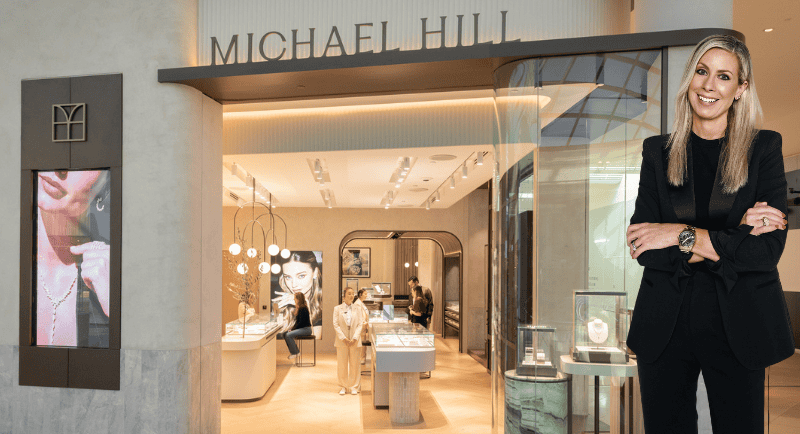The recent Michael Hill rebrand attracted the attention of the marketing sages on ABC’s Gruen. They offered conflicting views about the repositioning of the retail jewellery chain, including the company’s attitude to the existing customer base.
The retailer recently launched its re-brand at a new Melbourne flagship store at Chadstone shopping centre.
To hear about how and to whom Michael Hill will be marketing the rebrand, Mediaweek spoke to chief marketing officer Jo Feeney.
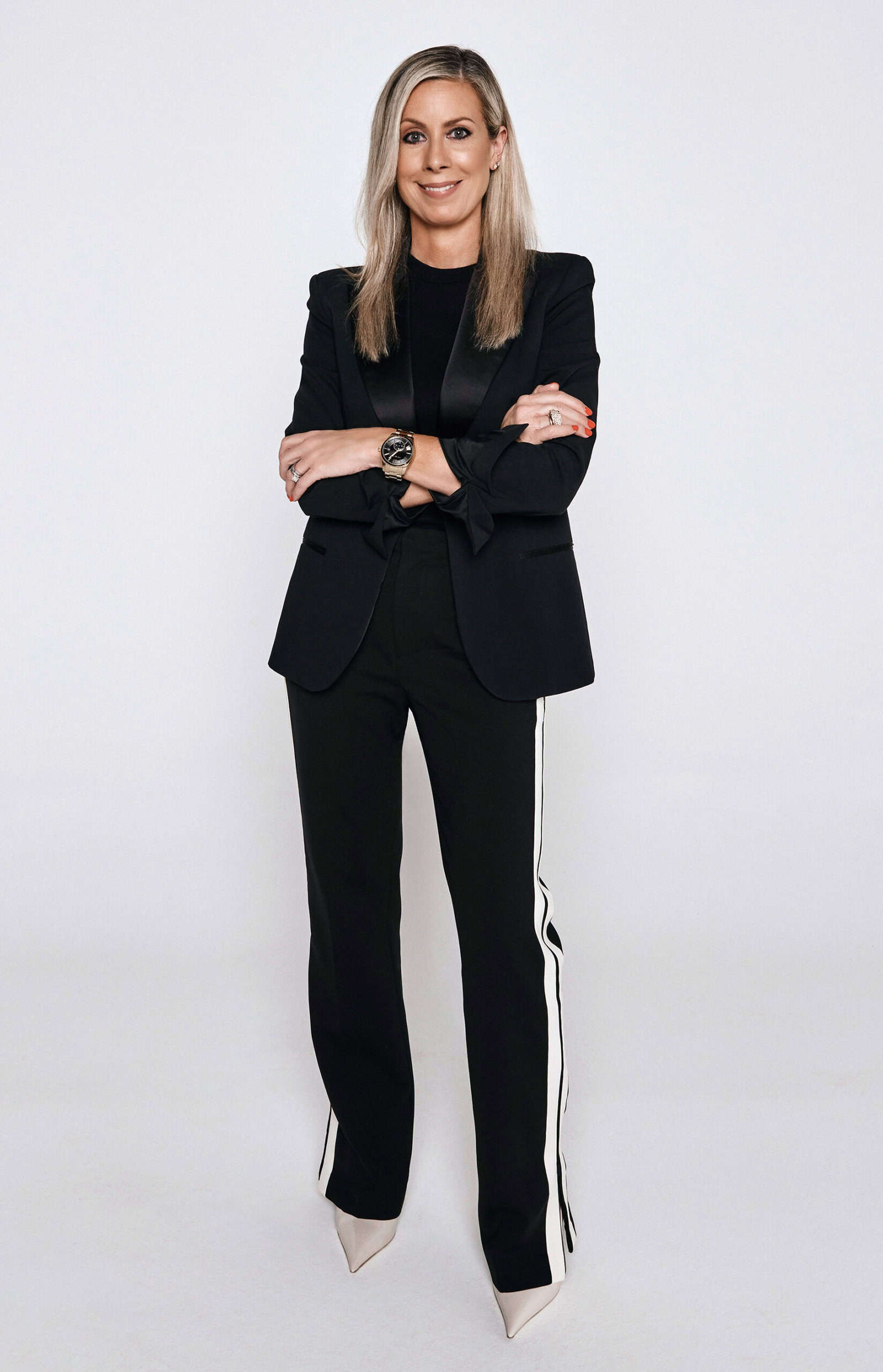
Jo Feeney
Something of a retail marketing specialist, Feeney has been with Michael Hill for just over three years.
After starting her career in New Zealand, Feeney moved to Australia and held marketing roles at Telstra and Foxtel. She spent nearly eight years with McDonald’s.
What is Michael Hill?
The jewellery brand was started in New Zealand by Sir Michael and Lady Christine Hill. There are 270 stores across New Zealand, Australia, and Canada, with close to 150 stores in Australia.
The company recently expanded the footprint of its Chadstone outlet to open what is called a Michael Hill global flagship store.

Inside the Michael Hill global flagship store.
Top: Jo Feeney and the facade of the Chadstone store
Pitching the rebrand
“We are on an aspirational brand journey,” Feeney told Mediaweek. “And have been for the last few years since I started. We recognised a space in the category for us to push into. There have been a range of value jewellers and others at the luxury end.
“We’re not pitching ourselves at luxury, but at an audience seeking something a little more premium. We have gone through a process not to alienate our current customers. We’ve got a lot of very loyal, important customers to the brand, and we did a lot of work to understand how they would feel about this change and the rebrand.
“Many of our current customers are excited about modernising and it was right for us to move with the times a little bit more and to evolve.
“The rebrand refers back to our DNA and our history as a fine jeweller when Sir Michael and Lady Christine started the brand nearly 45 years ago. They are very passionate about the craft and creativity. That’s always been a really important part of the business.”
Feeney stressed the rebrand is not starting a range of more upmarket stores. The Michael Hill rebrand is being rolled out across all stores in the network.
“We will aim to have a flagship store in each of our markets as a starting point.”
The company will refresh stores over time to adapt to the new brand and look.
See also: Michael Hill names Miranda Kerr as first brand ambassador

Miranda Kerr for Michael Hill
Marketing challenges
“We are making sure we are talking to our current customers who will essentially feel better about the new Michael Hill. We still have a wide range of accessible price points.
“We’ve added a layer to the top end, which really elevates the brand and brings in a different customer. We’ve been working hard on our product evolution for the last few years to really focus on more unique products.”
Marketing spend
“The challenge for a lot of CMOs is how to do more with less. It is about being a lot smarter about how you spend your dollars.
“I haven’t had an increased budget since the day I started at Michael Hill. I had exactly the same marketing spend when I began.
“We’ve been working on the rebrand for a couple of years because it does take time to build these things and do them at the right time.
“We’ve been shifting our marketing communications for the last three years to elevate how we appear. It wasn’t like we just ripped a big band-aid off.”
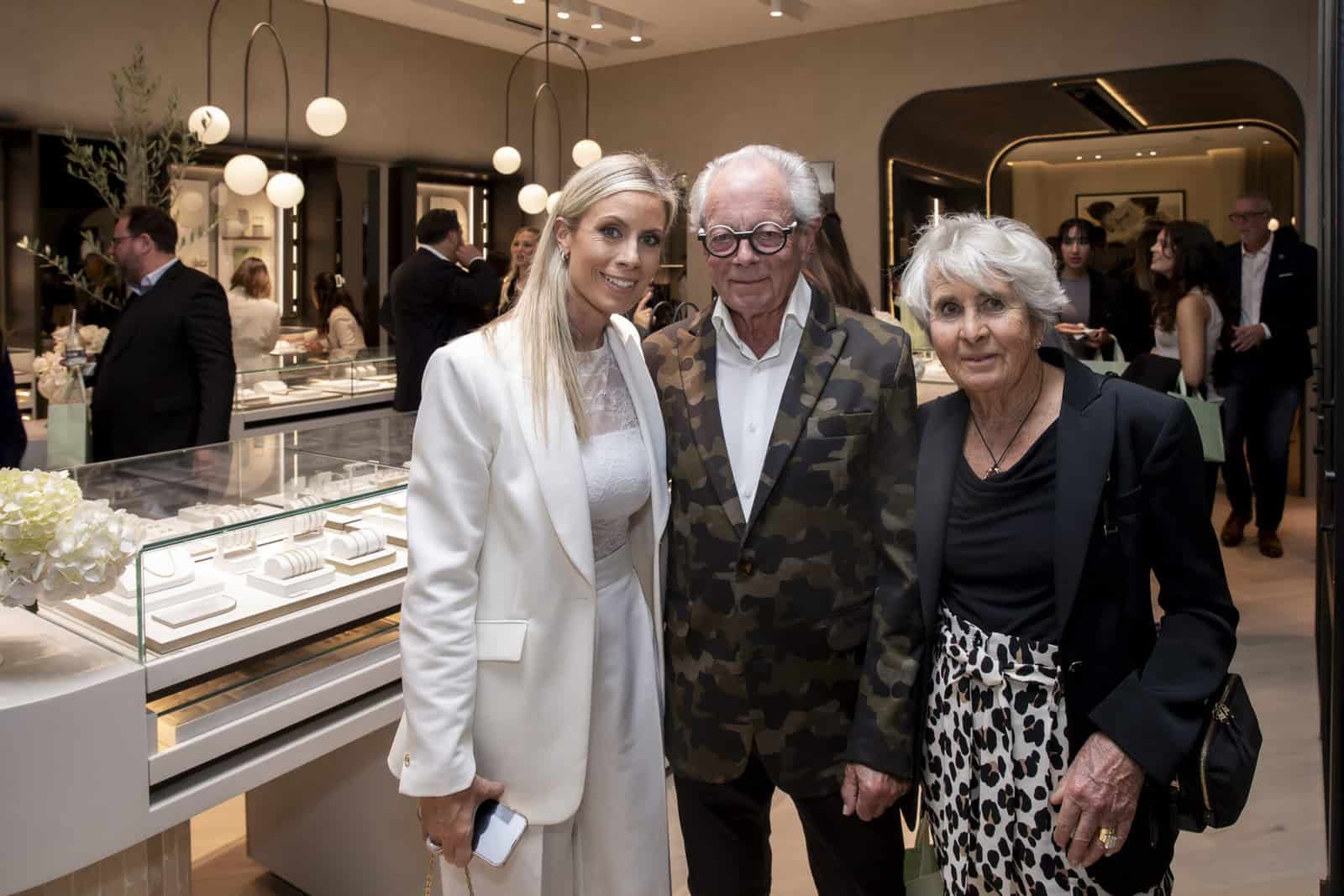
Jo Feeney with company founders Sir Michael and Lady Christine Hill
Brand positioning
“In our space, brands are often considered to be either mass or luxury. We talk a lot about premiumisation, which is in between those two. We would like to think we’re sort of accessible premium.
“Our media is geared to encouraging our customers to engage with our website and our stores.
“The website is sometimes the first window to the brand. Our website has gone through a complete refresh in this process as well.
“It was critical that happened at the same time as the brand refresh in the stores. People like to explore and understand a product, learn a little bit and see before they go into a store.
“In the jewellery category, people often want to physically see the product first, particularly if they are spending a reasonable amount of money.”
See also: Michael Hill jewellers enters ‘new era’ with brand refresh via CHEP
Where did the media money go?
Guiding the media spend for Michael Hill is Feeney and media agency OMD.
“For the Chadstone store, we have done some local area marketing. In a retail centre, out-of-home plays a key role in some of those premium environments. Particularly Chadstone where they’ve got some incredible assets in that mall.
“We’ve been doing more with the likes of Vogue Australia. We are trying to appear in the places where we know our growth customer is. A brand like Vogue, for example, has a lot of trust. People really listen to what they say.
“We’ve chosen to go down that path of partnering with some of those brands. Choosing the right channels is important. We’ve had some great success in the relaunch with out-of-home, which has been impactful.
“We certainly look to use a variety of different channels. Taking a personalised approach to our customer comms through our EDM program and things like that. We do use propensity modelling and predictive data when we talk about our strong loyalty program.
“The more we can learn about our customers and the more personalised we can be with our customers, the better.”
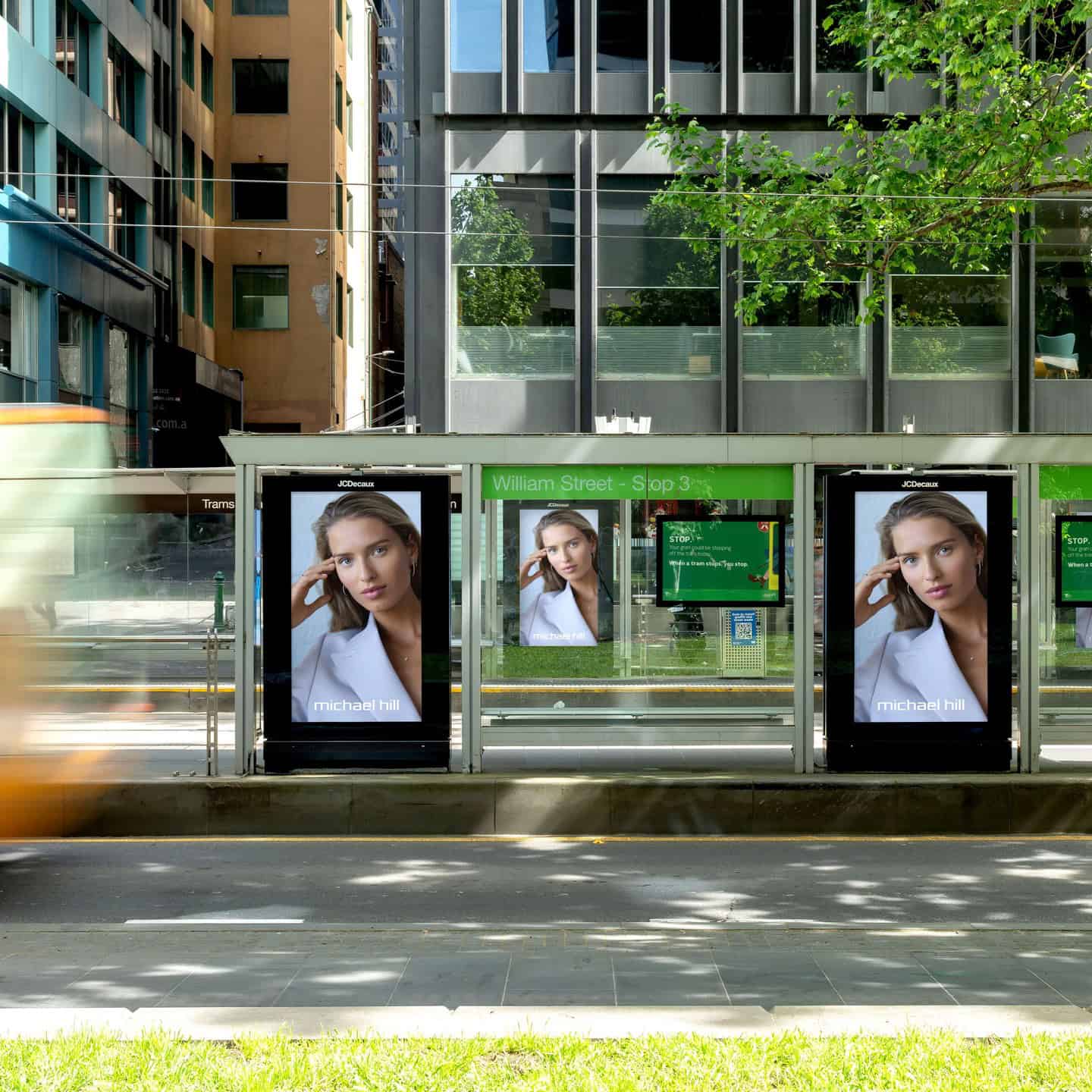
Michael Hill partnered with JCDecaux for this Valentine’s Day campaign
Increasing digital spend
“The big shift since I’ve started at Michael Hill is our digital spend. The business used to spend money on catalogue distribution, for example. I switched that directly into direct media channels.
“With media spend, I’m very particular that we have the right mix where we can target the customer rather than just a spray and pray approach.
“You have to cherry-pick a little bit more and you have to be really targeted.
“If someone were to reduce my marketing spend, media is probably the place that I would want to affect the least.
“Getting people to see your brand and what it looks like is really important. You can have the best media placements in the world, but if you’ve got the worst creative, you’re ineffective.”
Feeney explained the type of ad campaign impacts the spend.
“For a sale campaign, we would do a lot more in retail out-of-home close to our stores.
“Whereas with the brand relaunch campaign, we did a lot of big format out-of-home to make sure we had big reach and we had impact.
“If we use radio, it is very specifically for a sale moment. Because jewellery is a visual category.
“Certain channels work for certain campaigns, but I wouldn’t run radio all the time, for example. We do cinema because we get to portray our product in a really beautiful, visual way. I’m also a very big believer in emotional storytelling when it comes to brands and certainly in a category like jewellery, it’s very personal.”
Buying media bargains
With media companies under pressure to meet their budgets, Feeney was asked about special rate cuts and packages being offered to advertisers.
“I think we’re going to see more of it is what I would say. We ask the question often about what is happening in the space. I feel that heading into the next six or so months, we will see a little bit more of that happening.
“My view is we all want to be in it to support each other. How do we support the media channels for the long term as well?”
Michael Hill feels some media channels are more appreciative of being able to partner with the firm.
“I’ve built a very strong relationship with Edwina McCann, for example, from Vogue Australia. They’re a business that has many luxury brands who support them all the time. They love what we’re doing. They want to support us and it’s mutually beneficial.
“I know from when we have discussions with OMD, there are definitely partners who certainly are openly appreciative of the ongoing commitment and support.”
While Michael Hill is keen to deal, Feeney added: “It’s all about relationships as well. And not trying to whittle people down too far, because it becomes unsustainable.”
